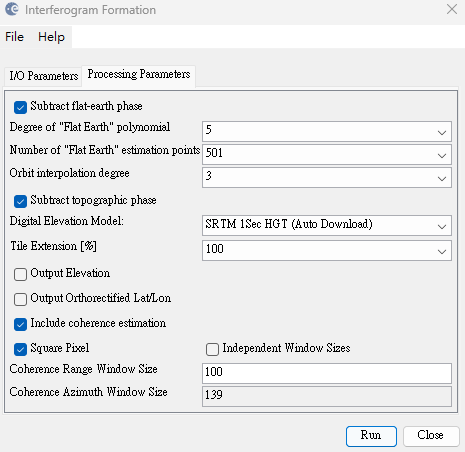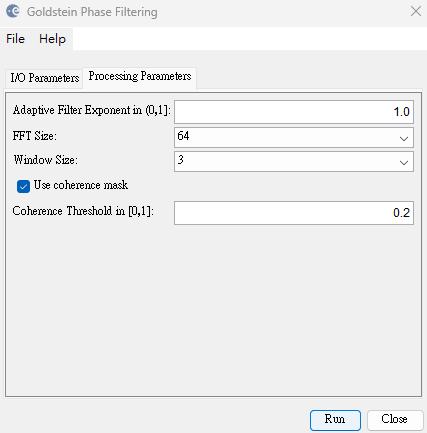before you can import the unwrapped phase, you have to create it by executing snaphu.
Please check the instructions regarding snaphu in this tutorial: Sentinel-1 TOPS interferometry
before you can import the unwrapped phase, you have to create it by executing snaphu.
Please check the instructions regarding snaphu in this tutorial: Sentinel-1 TOPS interferometry
Hello,
I have been trying for snaphu unwrapping. Even after following the steps from the above pdf still it showing the error and phase unwrappin is a problem. I am not getting whther there is problem with the system im using or software. please suggest something so that i can try.
please help us understand your case:
SNAPHU is very particular in that you HAVE to set up the inputs correctly. This can be a bit hard to follow at times if you have not been diligent in setting up how you write your new data.
This is not perfect, but it is a more detailed workflow of the steps I took.
PALSAR 2 InSAR Workflow in SNAP.docx (855.7 KB)
Dear all,
I have tried to process the ALOS-2 data to generate an interferogram for co-seismic surface deformation in Japan.
I can obtain a clear interferogram after the “Goldstein Phase filtering” step. However, I’m puzzled by the presence of noisy signals in the sea area. I assumed that the sea should be an area with no signal. The result is shown below. Is this outcome reasonable? Thank you for your kind assistance.
If your coherence-window is very small spurious coherence will appear also over the sea. Try a larger coherence-window like 9x something or even larger.
Hi @mengdahl
Sorry for the delay in responding after such a long time. Thank you for your suggestion.
I have tried to add the coherence range window size to 100 in the “Interferogram Formation” step. And use coherence mask in the Goldstein Phase Filtering. The parameters I set as follow


The presence of noisy signals in the sea area still exist. The interference ring is even gone.
Also, I feel that the interference ring I initially obtained is quite peculiar. It seems more like orbit errors rather than coseismic deformation caused by an earthquake?
I’m not quite sure where I went wrong. The steps I used were Coregistration, Interferogram Formation, and Phase Filtering.
Could you provide me with some advice? I hope to use SNAP to process ALOS-2 images and obtain coseismic deformation from the Japan earthquake in January of this year.
Thank you very much!
Hi @mengdahl,
I apologize for bothering you again, but I really need some assistance. Could you please provide me with hints or suggestions to address my issues? Thank you very much!
Your temporal baseline of 1.5 years is long. Try starting with a shorter baseline as then you are likelier to have better coherence overall.
ps. I find it odd that in your example above the interferogram appears to be pure noise (coherence 0) but your coherence image disagrees.
Thank you for your suggestion.
I have tried using an image pair with a shorter temporal baseline (2023/6/6 & 2024/1/2) to generate an interferogram. The steps I followed are:
The following is the result. The interferogram still looks very strange. It also shows lines in the horizontal direction.
I found the interferogram generated by others as below.
(TRE ALTAMIRA on LinkedIn: #earthquake #noto #japan #fault #grounddisplacement #alos2…)
The interferogram differs from my result, despite using the same images. I would appreciate your assistance in addressing this issue. Thank you very much.